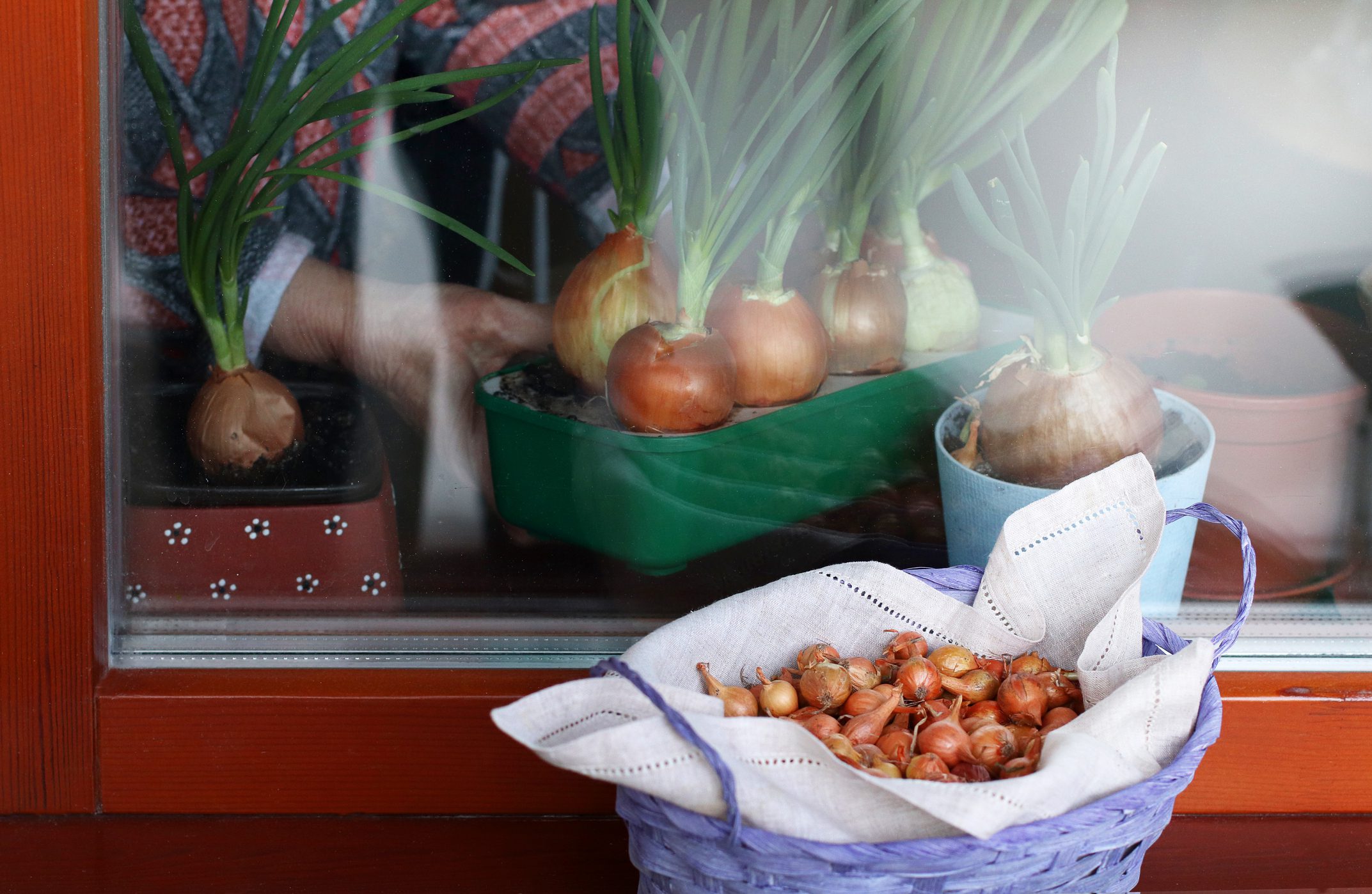Sick of finding a week-old bag of Brussels sprouts stuck in your crisper drawer? How about that wilted container of spring mix lettuce you had high hopes for when you went grocery shopping? Every year, 40% of all food is wasted in America. The numbers are staggering: that waste amounts to 130 billion meals and over $408 billion in food yearly! 1
Over the past year or so, food prices have dramatically increased. Throwing away gone-bad or expired foods takes a hit on food waste and your wallet. The solution for reducing food waste and costly bills requires thinking ahead. Having clear strategies to utilize food effectively saves waste, money, time, and effort.
By planning your meals and shopping for only what you need, you reduce the amount of food that gets thrown in the trash, minimize the effort required for food preparation and cleanup, and avoid impulse buys at the supermarket.
Once you get in the habit of utilizing food effectively, you’ll see how simple and even fun it can be. With that in mind, I’m sharing my favorite ways to reduce food waste.
1. Save Vegetable Scraps for Broth
Vegetable broth is simple, delicious, and a great way to reduce waste. Every time you prepare vegetables, save the scraps and add them to an airtight container in the freezer.
Variety is key here. Using different kinds of vegetable scraps creates a more flavorful broth. My favorites include onion and garlic skins, carrot and celery tops, herb stems, and the tough parts of leafy greens.
Some vegetable scraps can make broth bitter. These include cabbage, broccoli, and cauliflower leaves. Keep these cruciferous flavors in mind when you’re making your broth and consider what you’ll use it for.
To enhance the flavor of your broth, you can also add herbs, spices, and other ingredients such as ginger, bay leaves, peppercorns, and garlic cloves.
Once you collect enough vegetable scraps, simmer them in water for several hours to make a delicious broth that can be used in soups, stews, sauces, and other dishes. Enjoy the broth and the satisfaction of reducing food waste!
2. Grow Scallions in Water or Soil
Regrowing scallions in water reduces food waste and lets you enjoy fresh, flavorful green onions at home. If a recipe calls for using the green part only, you can save the white part, stick it in a glass of water, and watch it replenish itself!
Make sure to change the water every few days to keep it fresh and prevent any buildup of bacteria. Scallions usually take about a week to grow back. Be sure to place it in a sunny location to speed up the process.
You can also stick the whites in a pot of soil to give it even more nutrients. You’ll be amazed at how quickly the scallions regrow.
Once they’re ready, snip off what you need and continue to grow the rest in water or soil.
3. Keep Vegetables Crisp in Cold Water
Sometimes we get a little ambitious when grocery shopping and buy more veggies than we can get to before they start to wilt or soften. Storing vegetables in cold water is a great way to extend their shelf life, keep them crisp, and reduce food waste.
Before storing your vegetables, rinse them thoroughly with cold water to remove any dirt or debris. You can slice or chop them ahead of time, too. Then place veggies you want to keep crisp, like carrots and celery, in an airtight container filled with cold water, and keep in the fridge. The water should cover the vegetables completely and keep them hydrated.
Be sure to change the water in the container every few days to prevent bacteria from growing and causing spoilage.
Other vegetables like kale and leafy green herbs can stay fresher longer by placing the stems in a jar of cold water, stored in the fridge.
The fruit and vegetable powders in our All-In-One Shakes are an efficient way to meet your daily quota… along with vitamins, minerals, phytonutrients, and 20+ grams of high-quality protein in every serving. Whether you’re vegan, vegetarian, paleo, or diet-agnostic, we have one for you!*
4. Store Food Properly
Proper storage techniques help extend the shelf life of food and keep it fresh for as long as possible. As well as the above, some additional strategies for storing food properly to prevent waste include:
- Store fruits and vegetables separately: Fruit releases ethylene gas, which can cause vegetables to spoil faster. Store fruits and vegetables in separate containers to keep them from going bad.
- Use airtight containers: Remember that kale you took home from the store that stayed in its plastic produce bag until you were ready to use it… only to find that it was totally wilted? Or maybe those carrots stayed in their bag long enough to become suspiciously flexible. Be sure to store your food in airtight containers to prevent early spoilage caused by air exposure.
- Use your freezer: If you notice your produce starting to wilt, soften, or shrivel—toss it in the freezer to use for future smoothies, blended soups, or other recipes where the change in texture won’t make a difference to the final dish.
- Label food with date: Don’t rely on memory alone (trust me, your future self will thank you). Label containers with the date the food was cooked and stored so you’ll know when to use it before it goes bad, or how long it’s been taking up residence in the back corner of your freezer.
- Store dry goods in a cool, dark place: Store dry goods such as nuts and almond flour in airtight containers. Place them in a cool, dark place to prevent oxidation and spoilage.
5. Get Creative with Leftovers
Get creative with leftovers and turn them into new meals! Some ideas to get you motivated:
- Repurpose leftovers into new dishes: Transform leftovers into new dishes such as soups, stews, and casseroles. I love cooking up extra servings of this Paleo Steamed Broccoli with Garlic Oil Drizzle recipe and repurposing it!
- If you’re not egg intolerant, make frittatas or quiches with pasture-raised eggs: Mix leftover vegetables, meats, and cheese that you need to use up into an omelet or quiche. These Easy Detox Vegetable Fritters
- Make a wrap: Use leftover meats, vegetables, and sauces to make a lettuce, cabbage, or gluten-free wrap. To give you an initial idea, improvise with these Turkey, Spinach, and Strawberry Wraps.
- Make a salad: Chop up leftover vegetables and meats. Toss with dressing for a quick salad. Mix-and-match with this Flank Steak Bistro Chopped Salad.
- Make pasta dishes: Toss leftover vegetables, meats, and sauces with cooked zucchini spirals or gluten-free pasta to make a quick pasta dish. Get creative with this Quinoa Fusilli with Cherry Tomatoes, Garlic, Basil, and Olive Oil dish!
- Create cauliflower rice dishes: Mix leftover meats and vegetables with cooked rice to create a new rice dish.
Whether you want to reinvent a pasta dish to be healthier or need creative ways to get more vegetables, I’ve got sure-to-be-a-hit recipes for nearly any favorite on my recipes page.
6. Buy Imperfect Produce
You may have seen fruits and vegetables that are misshapen or have cosmetic blemishes advertised at a discounted price. Buying “ugly” produce helps reduce food waste and saves you money. Sadly, much of this produce would otherwise go unsold and eventually be tossed.
You can buy imperfect produce in several ways, including:
- Farmers’ markets often sell produce that may not meet grocery store standards but is still perfectly edible. By buying from small local farmers, you can support your community and help reduce food waste.
- Online delivery services sell fruits and vegetables that may not be aesthetically perfect but are still perfectly good to eat. Imperfect Foods and Misfits Market are two popular options.
- Some grocery stores or co-ops offer bulk discounts on imperfect produce, allowing you to purchase a larger quantity at a lower cost.
- If your local grocery store doesn’t already offer imperfect produce, ask if they would consider offering it. Creating demand for this type of produce helps reduce food waste and supports sustainable practices.
7. Use a “First-In, First-Out” (FIFO) System
The “First-In, First-Out” (FIFO) system is a method used to reduce food waste by rotating stock in your kitchen. You place the newest products at the back of the storage area and move older items to the front, so you use them first.
Here’s how to use FIFO:
- Label items with their purchase or cook date, so determining the oldest item is clear.
- Store the newest items on the back of the shelf, and older items in the front.
- When restocking, place the newest items at the back, so you always use older items first.
- Monitor expiration dates and prioritize using items that are closest to their expiration date.
8. Add to Your Loaded Smoothies
My protein-first approach to eating includes loaded smoothies, which provide the perfect way to get more protein into your plan.
Customizing your loaded smoothies can include throwing ingredients that may expire soon or that otherwise would perish. Some ideas include:
- Frozen fruit: While I love fresh fruit, I know how easily it can go bad, so I like to toss it in the freezer when it’s starting to turn. If you’re stocking up on frozen fruit in a sale (another great way to reduce waste by keeping it frozen and not letting it spoil), read ingredients to ensure it doesn’t contain added sugar or other problem ingredients.
- Leafy greens: Tossing leftover kale and other leafies into your loaded smoothies provides a nutrient and antioxidant punch while helping you reduce waste.
- Freeze canned coconut milk in an ice tray: This helps with portion control (simply throw a few cubes into your loaded smoothie) and prolongs the freshness. You can also do this just-about-to-expire carton plant-based milks.
Breaking your fast every morning with a fast, filling loaded smoothie saves you time, money, and food waste. Need some yummy ideas? I’ve got over 60 recipes in my Loaded Smoothie Cookbook. It’s FREE… and guaranteed to be a game-changer for fat loss and overall health.
Small Changes Can Have a Big Impact
One of my favorite sayings is that small hinges swing big doors. By making small changes in how you use and store food, you save time and money while reducing food waste. Properly planning and storing meals, buying only what you need, and finding interesting ways to use leftovers are some of my favorite ways to save money and get creative.
I’m all about stretching your food budget! With that in mind, you’ll find these helpful to further save time and money while reducing food waste:
- Learn ways to save time and money with your food budget here.
- Read about 10 ways to keep fruits and vegetables fresher in this blog.
- Get 7 of my favorite kitchen staples to eat healthy on a budget here.
- “How do I feed my kids as healthy as possible on a tight budget?” (I answer this question here.)
References:
- Feeding America: How We Fight Food Waste in the US
*These statements have not been evaluated by the Food & Drug Administration. Products mentioned are not intended to diagnose, treat, cure, or prevent any disease. The views in this blog by JJ Virgin should never be used as a substitute for professional medical advice. Please work with a healthcare practitioner concerning any medical problem or concern.





